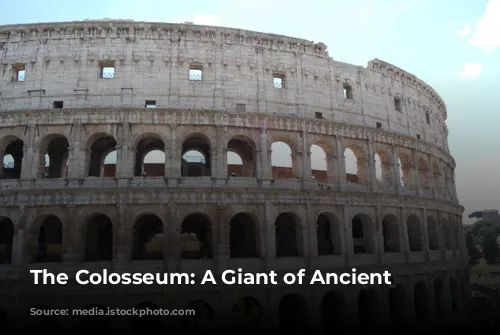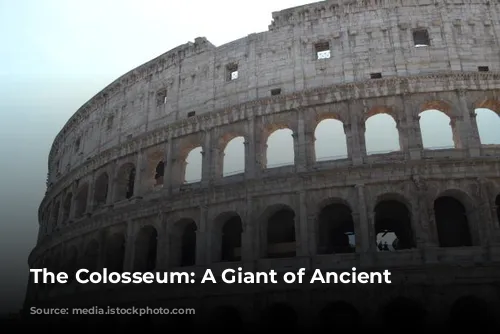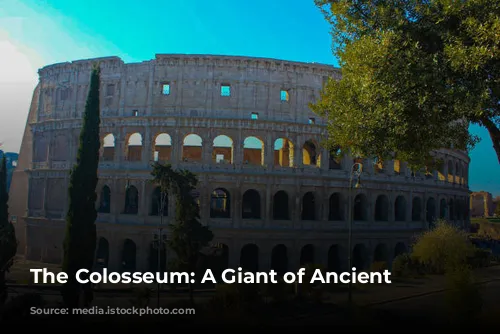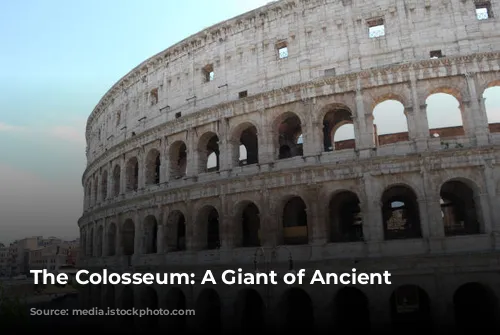The Colosseum, also known as the Flavian Amphitheatre, stands as a majestic testament to the grandeur of the Roman Empire. This awe-inspiring structure is the largest amphitheatre in the Roman world, surpassing all others in its sheer size and magnificence. It’s no surprise that it has become Rome’s most famous landmark, captivating the imaginations of people across the globe for centuries.
A Grand Opening for a Grand Arena
Emperor Vespasian, the founder of the Flavian Dynasty, initiated the construction of the Colosseum, which was completed by his son, Titus, and inaugurated with a lavish 100-day opening ceremony in 80 AD. This spectacular event showcased a multitude of gladiatorial contests, exotic animal hunts, and theatrical performances, attracting massive crowds. One particularly mesmerizing event was the naumachia, a grand naval battle staged in the arena, transforming it into a temporary sea.
A Name Rooted in Legend
But how did the Colosseum get its iconic name? The answer lies in a prophecy by the Venerable Bede, a medieval monk. According to Bede, “Rome will exist as long as the Colosseum does; when the Colosseum falls so will Rome; when Rome falls so will the world.” He likely derived the name from the Colossus of Nero, a colossal statue of the emperor that once stood nearby. This 35-meter-tall statue, now completely destroyed, might have inspired the name “Colosseum” due to its imposing scale.
Architectural Brilliance: A Masterpiece of Engineering
The Colosseum is an architectural marvel that embodies the Romans’ mastery of construction. Originally clad in gleaming travertine stone, it was designed as an elliptical structure to accommodate a vast audience. With four tiers of seating, each of the first three tiers boasted 80 arches, adorned with ornate statues. The Colosseum’s incredible size belies its remarkably swift construction time. It took less than a decade to build!
The Romans’ genius lies in their innovative use of the arch, a structural element that allowed them to distribute weight effectively and build monumental structures. The Colosseum exemplifies this architectural principle, resembling a stack of aqueducts, each level supporting the one above.
The Colosseum’s Transformation
The Colosseum we see today is merely a skeletal shadow of its former glory. Much of its outer brick wall has crumbled, leaving only three-fifths intact. Over time, this once-majestic arena was transformed into a quarry, with its precious stones, lead, and iron plundered to build other structures, including the Barberini Palace, Piazza Venezia, and even St. Peter’s Basilica.
A Stage for Spectacle: The Colosseum in its Prime
The Colosseum was a grand stage for entertainment, capable of holding up to 70,000 spectators. The seating tiers were carefully angled to provide excellent views for everyone, regardless of their location. Entry was free for Roman citizens, though seating was divided based on social status. The emperor, senators, vestals, and priests occupied the front rows, while the general public sat in the higher tiers.
The Colosseum also boasted a sophisticated roof system called the Velarium, a huge linen canopy that provided shade for spectators. This massive awning was maneuvered by 100 sailors from the imperial fleet, their synchronized movements directed by the beat of a drum.
Inside the Arena: Secrets of the Colosseum
Stepping into the arena, we are greeted by a vast space that was once covered by a floor of brick and wood. Today, the floor is gone, revealing the underground cellars that housed the equipment used for the elaborate shows. These cellars contained hoists and lifts used to bring animals and gladiators up through trapdoors, creating spectacular surprise entrances. A complex system of hinges and lifts also enabled the raising and lowering of elaborate backdrops, used to enhance the hunts and other performances.
Gladiatorial Games: A Spectacle of Skill and Brutality
The Colosseum was renowned for its gladiatorial contests, which were the most popular events. These gladiators, often former prisoners of war or impoverished individuals, would enter the arena through a passageway leading from their barracks, the Ludus Magnus. They were greeted as heroes, much like modern sports stars, and paid homage to the emperor with the famous phrase, “Ave Caesar, morituri te salutant” (Hail Caesar, those who are about to die salute you).
There were many different types of gladiators, each with unique weapons and fighting styles. Some were Retiarii, using nets and tridents, while others wielded shields and sickles. The matches were often carefully chosen to create dramatic clashes between different fighting styles.
The fate of the defeated gladiator rested in the hands of the emperor. If a gladiator was wounded, he could appeal for mercy by raising an arm. The audience would then shout to the emperor, who would either grant the gladiator’s life with a thumbs-up gesture or condemn him to death with a thumbs-down.
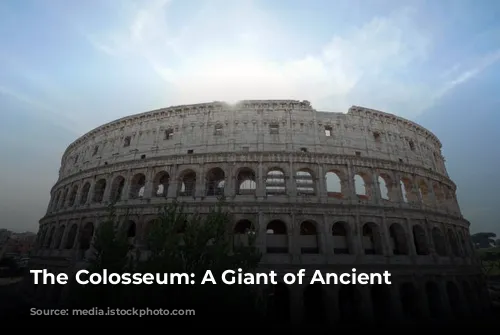
Beyond the Gladiators: A Variety of Spectacles
But gladiatorial contests were not the only entertainment offered at the Colosseum. The amphitheatre also hosted a variety of other shows, including venationes, which featured fights between exotic animals, sometimes pitting men against beasts. These events were often brutal, with humans left to the mercy of ferocious predators as a form of public execution. The Colosseum also hosted silvae, elaborate recreations of forests with animals, which were less violent and offered a different kind of spectacle.
The Colosseum was also a stage for unique and surprising performances. One famous event featured an elephant who had been trained to write words in the sand with its trunk.
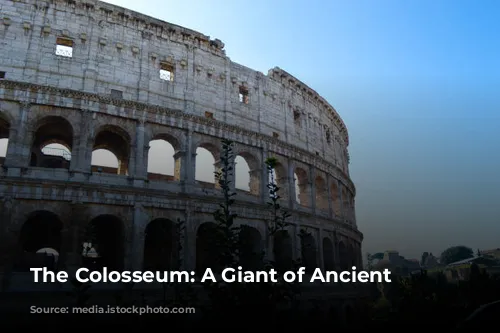
A Lasting Legacy
Despite the Colosseum’s history of violence and brutality, it has become a symbol of enduring power and magnificence. It stands as a poignant reminder of the Roman Empire’s grandeur, its architectural ingenuity, and the complex social dynamics that played out within its walls. Though its days of gladiatorial combat are long gone, the Colosseum remains a powerful and inspiring monument to the human spirit, captivating visitors with its enduring grandeur.

